How to Set Up an Ecommerce Loyalty Program to Improve Retention, Build Community and Drive 5X in Sales
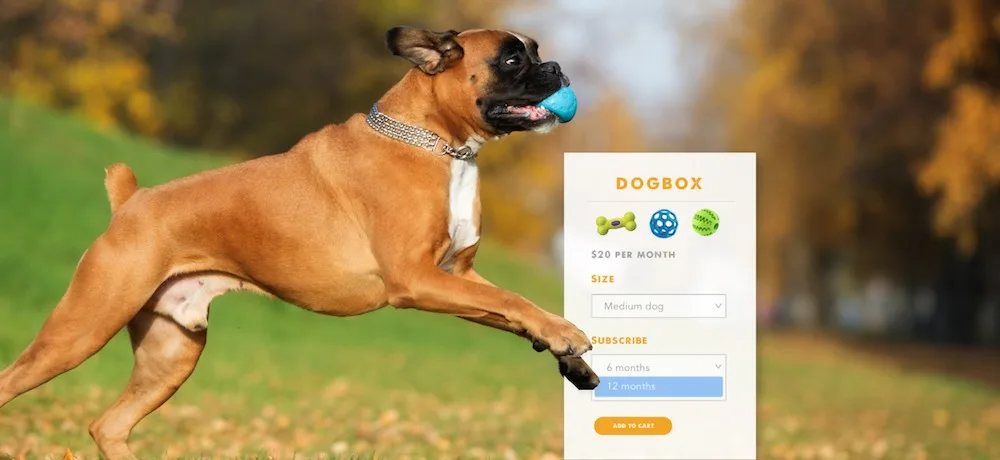

How to Set Up an Ecommerce Loyalty Program to Improve Retention, Build Community and Drive 5X in Sales
Get The Print Version
Tired of scrolling? Download a PDF version for easier offline reading and sharing with coworkers.
A link to download the PDF will arrive in your inbox shortly.
A few years ago, Forbes contributor Ken Krogue noticed a lady returning rotten, moldy fruit at a Costco store.
The clerk attending to the woman kindly offered her money back, even though she bought the fruit days ago, when they were still fresh.
Costco is willing to go to great lengths to keep their customers satisfied.
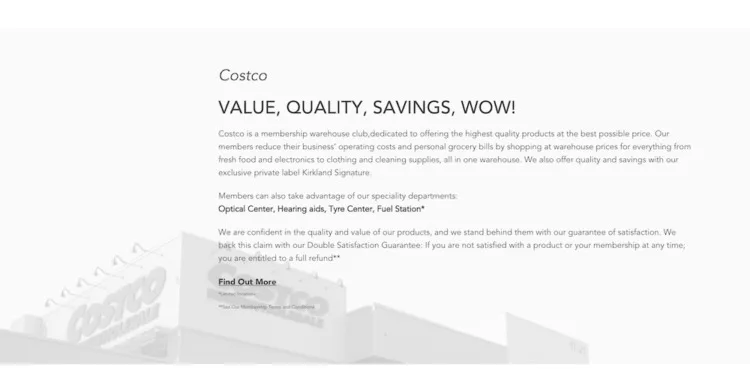
After a year hiatus from having the top Net Promoter Score (NPS), Costco is back in the top spot.
What is the Net Promoter Score?
The Net Promoter Score is a tool that can be used to gauge the loyalty of a firm’s customer relationships and can be related to a firm’s revenue growth.
The math is simple behind Costco’s business:
Loyal customers who buy repeatedly are more profitable than ones that buy once.
Why?
Because repeat customers have a higher lifetime value, meaning that over the course of a customer’s projected buying time with your brand, you can predict a high return on investment.
For instance, if you spent $5 to earn a customer and you know that over the course of that customer’s lifetime with your brand, they will likely spend about $100, that’s a great lifetime value to churn (or cost to acquire a customer) ratio (LTV to CAC).
Costco works hard to keep their customers because it costs 5x less to retain customers than acquire new ones and loyal customers spend up to 67% more than new customers.
Customers become loyal to a brand when the products are high quality and are delivered as promised, or when the brand can offer them amazing customer service.
Yet, due to intense competition, great customer service, like that at Costco’s brick-and-mortar stores, isn’t always enough to keep customers coming back.
So, how can you increase retention and customer lifetime loyalty?
That’s what we’ll cover today, teaching you how to Implement a customer loyalty rewards program that works for your brand.
We’ll cover:
What an ecommerce customer loyalty program is.
Why you need one.
The various components involved in building out a customer loyalty program.
The types of customer loyalty programs available (and their hybrids).
Examples of ecommerce customer loyalty programs (with case studies).
Let’s dive in.
Provide Repeat Value

If you want lifetime customers, you not only have to continuously prove that your product is worth what they’re paying for it, you also have to give them that something extra.
Show them that you’re the expert in your field and reward them for their loyalty. Many businesses use loyalty programs to reward repeat purchases which has shown to be very effective, especially for ecommerce.
– Emil Kristensen, CMO and co-founder, Sleeknote.
What is a Customer Loyalty Program?
Customer loyalty refers to a customer’s willingness to work with or buy from a brand repeatedly as a result of positive customer experience, satisfaction, and the value the customer gets from the transaction.
A customer loyalty program helps push customer loyalty by providing rewards to customers that frequently patronize the business’ products and services.
Through the loyalty program, the customers may be given:
Discounts and rebates.
Rewards.
Free merchandise.
Coupons.
Access to unreleased products.
Loyalty programs first originated in the 1950s, when grocers gave customers stamps for making purchases, eventually spawning airline miles rewards in the 1980s.
Who Needs a Customer Loyalty Program?
Anyone who has customers can benefit from a loyalty program.
However, certain types of internet retailers will see greater value from a loyalty program.
These retailers have the following characteristics:
1. Online retailers who receive a steady stream of at least ten or more orders a month will see greater benefit from a reward program.
Repeat orders are more likely when online retailers are generating a steady stream of new customers.
If you are not generating a steady stream of customers or orders already, launch an ad program to raise brand awareness and drive traffic to your site.
Google Shopping is a tried and true favorite for most mid-market brands, but Facebook and Instagram are equally attractive and allow you to narrow down your audiences with Power Editor.
2. Online retailers operating in a niche where customers are price sensitive are ideal candidates for a loyalty program.
Price sensitive customers respond better to rewards than customers in big ticket or luxury markets where price is not an important factor.
A loyalty program in a fashion or beauty niche can also be successful. Sephora, for instance, has a hugely successful loyalty program.
If your various selling channels have different selling propositions – for instance, on your independent website your unique products are more of a draw than your prices, but on your Amazon channel, your price competitiveness wins out – then consider running different loyalty programs for those two audiences.
Or, test out a loyalty program to help grow a specific channel.
3. Online retailers operating in markets with several competitors are also ideal candidates for a loyalty program.
These retailers see the greatest benefit from customer loyalty programs since they are at the greatest risk of losing customers to competitors.
A loyalty program may also help you to stand out amongst your competition, giving you the upper hand and making you appear more customer-centric than other brands.
Why You Need an Ecommerce Loyalty Program (Hint: Retention)
The biggest advantage of a loyalty program is that it has the potential to align your entire business toward the most profitable segment of your customer base.
This means that your business will begin catering more to customers who have high repeat purchases or average order value – depending on what type of loyalty program you implement.
Over time, you’ll also be able to use the data collected from a loyalty program to figure out ways to make the least profitable customers more profitable, increasing your customer lifetime value, and thus company revenue and projected profitability overall.
Loyal customers often convert and spend more money with brands they like, with 78% of loyal customers willing to spread the word to their friends and family.
Word-of-mouth marketing is one of the best and most powerful kinds of marketing, with 92% of people preferring suggestions from their friends and family over traditional advertisements.
Here are some other benefits of a customer loyalty program:
Retain existing customers. As mentioned, it costs 5x less to retain customers than acquire new ones
Acquire new customers. Although the main purpose of a loyalty program is to retain existing customers and increase repeat orders, it can also be used as a benefit to attract new customers.
Move customers up the buying ladder. A loyalty program will systematically move your customers up the buying ladder – converting first time buyers into repeat buyers and keeping your repeat buyers spending more often with you.
Win back lost customers. While it may seem inevitable that a certain percentage of customers will be lost over time, a loyalty program will allow you to identify, target and bring back these lost customers.
Increase the lifetime value. When you increase the frequency of customers shopping with you, you will automatically increase the lifetime value of your customer.
Identify your best customers. A loyalty program identifies your best customers. Once identified, you can then start observing patterns in their behavior. These patterns can be used for better merchandising, advertising and customer service.
Create your best brand influencers. Your best customers are buying repeatedly from you because they love what you are doing. These customers are prime candidates to be your brand influencers. A loyalty program helps you to take the first step, which is to identify your potential brand influencers.
Set you apart from the competition. The best part of a loyalty program is that it can inoculate you from the competition. With a loyalty program in place, your competitors will have a harder time peeling away your customers.
Reduce advertising costs. When you learn who your best customers are, you can target your advertising to bring in more new customers who fit the profile of a best customer. These new customers are more likely to convert into repeat customers. This data can help you to cut down advertising costs by eliminating advertising in mediums that attract one-time buyers or deal-seekers.
Components of a Loyalty Program
All loyalty programs boil down to a simple concept – customers are rewarded for taking certain actions. Businesses customize on the above principle to create their individual loyalty programs.
These customizations consist of making changes to the following components:
1. What actions will customers be rewarded for?
Successful loyalty programs focus on a single customer action: getting customers to buy again.
However, you can also reward your customer for other types of actions such as store registrations, referrals, social shares, etc.
The most successful loyalty programs focus on repeat orders and ignore ancillary actions such as social sharing, reviews, etc.
2. How will customers redeem and use their rewards?
Once your customer has earned a reward, you will need to decide how the customer will access and use their rewards.
This is where most online stores make the mistake of complicating the program. Some common mistakes include:
Making the customers manually redeem points.
Offering rewards that are difficult to use such as coupons or gift certificates.
Avoid these mistakes by making it easy for your customers to earn, redeem and use their rewards.
3. What kinds of rewards will you offer?
You can offer your customers several kinds of rewards from free shipping to percentage off to store credit. It is tempting to assume that strong rewards will lead to a successful loyalty program.
On the contrary, an easy to use loyalty program will always outperform ones that offer greater rewards. It is best to start a loyalty program with one reward.
4. What are the rules of your customer loyalty program?
The rules of your loyalty program allow you to protect yourself from abuse.
However, it’s best to have a few, sensible rules and not make it overly complicated.
Below are some simple rules to get started with:
Rewards are available to registered customers only.
Points earned or redeemed do not apply to tax or shipping.
Points are earned and redeemable by the email address on account only.
Points are non-transferable.
Points may only be redeemed for purchases and have no cash value.
Points are accumulated by current purchases only.
We hold the right to cancel an account at any time.
Ideas for Designing a Great Ecommerce Loyalty Program
According to The Loyalty Report 2017, the average customer is involved in 14 loyalty programs but can only effectively engage in 7.
When customers cannot engage in a loyalty program effectively, both the business and customer lose money on time and effort.
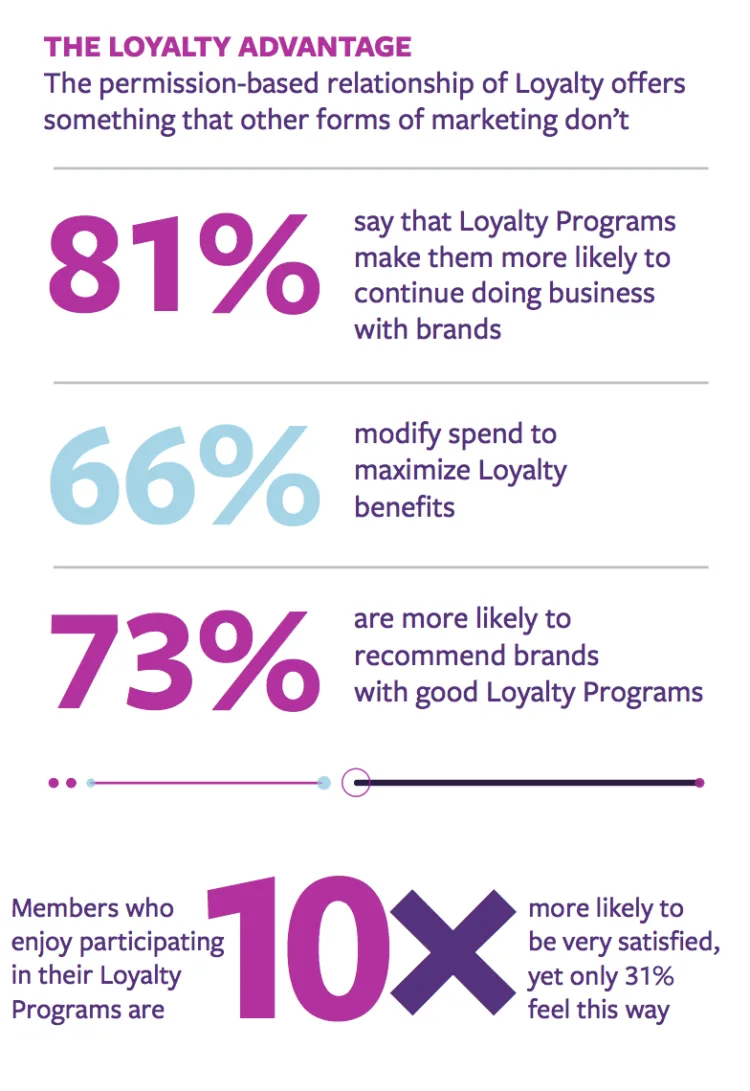
Similarly, research finds that 54% of loyalty memberships are inactive with 28% of customers abandoning the loyalty programs without redeeming points.
It is imperative to design a great loyalty program that customers actually make use of.
The best tip to designing a great loyalty program is to keep it simple.
“Keep it simple,” Andy Etemadi, CEO of EYEMAGINE. “Make it easy for customers to join and even easier for customers to participate. Make it fun for the customer and encourage competition with a leaderboard.”
The most common loyalty programs involve a process where the customer earns points for every purchase. These points can be translated to freebies, discounts or special perks—each depending on the number of points accumulated.
However, some loyalty programs make earning and redeeming points more complicated than it needs to be.
The best ecommerce loyalty program is:
Easy to understand: The best loyalty programs are easy to understand. Keep things as simple as possible. Instead of giving out 3 points for each dollar spent, hand out 1 point for each dollar spent. It is easier for customers to grasp.
Easy to use: Make it easy for your customers to earn and use their rewards. Try not to make your customers jump through hoops. Eliminate steps like requiring separate enrollment into the loyalty program, offering difficult to use rewards such as coupon codes. Customers become more loyal only when they use their rewards. So make it easy for them to earn and use their rewards.
Case in point: Sephora’s Beauty Insider Program.
For every purchase, customers swipe their Beauty Insider card. The card tracks the amount of money customers have spent at Sephora, with each dollar purchase earning a point.
These points can be redeemed for new beauty supply items.
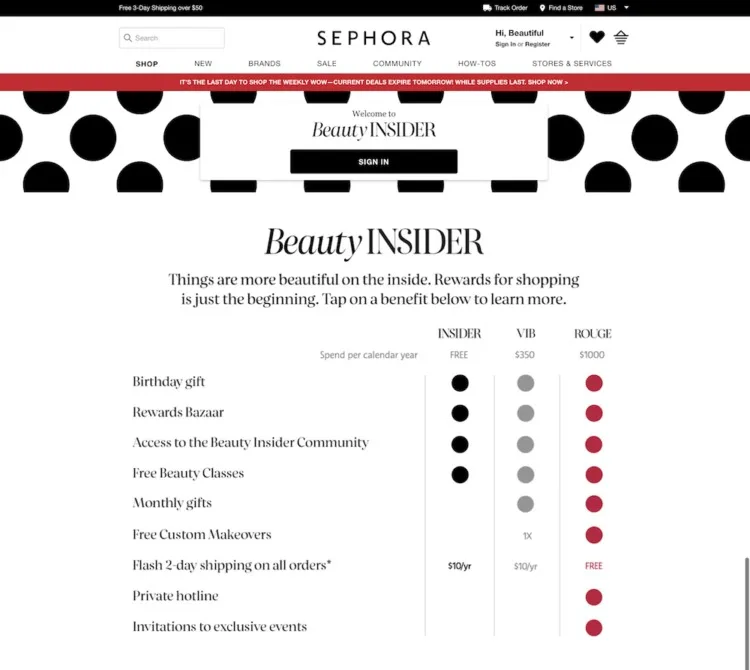
Here are some other things you can do to create an awesome ecommerce customer loyalty program:
1. Give it a Personal Touch.
Customers want to feel like they are valued.
Train your employees to treat customers well.
Give a personal touch so that when you ask of something from your customers (say, a survey or poll), they will willingly oblige.
It’s important to be available to customers via different channels: chat, social networking sites, and email.
A personal touch could also mean implementing personalized recommendations based on recent product views or purchases.
86% of consumers say personalization plays an important role in their buying decisions, and 87% of shoppers said that when online stores personalize, they are driven to buy more.
Remember, too, that the most common loyalty program features often aren’t the most successful.
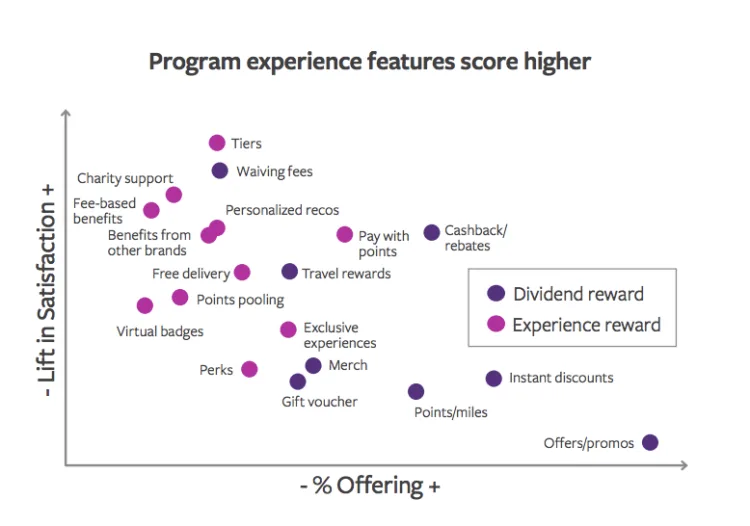
According to Bond and Visa Brand Loyalty Report
The more unique a loyalty experience and offering you can provide, the more successful it will be. Tailor it to your community and audience.
Focus on Authenticity

My biggest piece of advice to build customer loyalty is to focus on building authentic relationships.
Being true to your brand—and not being afraid to be playful, fun, or quirky if that’s what your brand is — is more likely to get your customers to come back again and again.
– Kayla Lewkowicz, Marketing Manager, Privy.
2. Build a Sense of Community.
“Build a community for your brand,” says Alex Birkett, Growth Marketing Manager at Hubspot. “Community building is a long term play and an underrated asset. But for good reason – it’s hard to build an authentic community”.
As far as how to execute this well?
“Building a robust and lively Facebook community at ConversionXL helped us tap into customer insights and get natural customer feedback, but it also opened a direct line of communication with customers and fans of the brand in general.
The discussions that happen there now, organically, are amazing and the community is a valuable thing on its own, outside of any branding/acquisition concerns”.
This is even more important in 2018, as Facebook algorithms change to surface more community content than brand or advertising content.
Just look at AdWeek’s advice to brands in light of the Facebook algorithm change in January 2018:
Publish less content via your Facebook page, but focus on more meaningful content that reinforces key brand messages.
Use Facebook advertising for awareness and promotions.
Stop any engagement baiting in your posts now — the kind of posts that say, ‘Like this for yes, angry for no,’ and so on. They won’t work.
Stop posting any content with a link to your blog or website. You cannot rely on Facebook for traffic.
Go back to your community and produce content that encourages meaningful one-to-many discussions.
Produce more live videos (not pre-recorded ones).
Look at setting up groups to build your community.
Look at the areas that are growing. Chatbots and messaging should now be a definite focus, alongside your Facebook brand page.
All of those recommendations are a call to community-building. It is more crucial than ever for businesses to integrate Messenger and initiate one-on-one conversations.
Begin building your community now. The best way to do that is by offering add-on services and forums to your existing product offerings.
Your brand doesn’t have to include every add-on service you offer, but it is smart to begin figuring out how to incorporate at least one of them as soon as possible.
WGSN calls this the upcoming generation the “crowdsourced capitalism” one.
Here is how they describe it:
Let’s face the facts – the sharing economy is here to stay and continues to disrupt. Estimated to grow to $335bn globally by 2025, this peer-to-peer marketplace is set to further impact the traditional corporate-centred economic model.
Community now – or fail later. Those are your current options.
3. Market the program
You could have the best customer loyalty program in the world but if no one is joining, then it’s not really doing anything for your ecommerce business.
Advertise and spread the word about your program.
Invite people to join through email, social networking sites, and online ads.
Encourage and incorporate user-generated content, so that your customers will be empowered to act as your biggest brand ambassadors.
Users who interact with ratings and reviews are 105% more likely to buy. UGC creators have an average 300-700% higher conversion rates, as well.
Here are a couple apps and tools that help brands generated user-generated content at scale:
Rivet Works: Combing the power of product reviews with product photos via email automation. Check out MountainCrest Succulents to see it in action.
Curalate’s FanReel: Combing the power of micro-influencer marketing with on-site traffic and conversion. Check it out in action at Spellbinders.
4. Be Ready to Adapt.
Not all customer loyalty programs are going to be perfect from the very beginning, so be ready to make some changes depending on customer response.
A few aspects to remember:
Start where you’re already at: Identify and optimize new loyalty assets in your organization, that are currently hiding in plain sight.
Do not operate in a silo: Integrate your Program and your brand’s discrete initiatives into a cohesive loyalty ecosystem.
Use your people to enable a better member experience: devote your program to enabling a better brand experience across the board.
How to Create and Implement a Customer Loyalty Program
As described earlier, a loyalty and retention program has two goals:
Convert new customers to repeat customers
Keep your repeat customers shopping with you
It takes significant time and effort to accomplish both of the above goals using a DIY loyalty program.
A more manageable approach is to start a DIY loyalty program that focuses on your best customers and keeps them shopping with you (goal # 2).
The first step to creating and implementing an effective customer loyalty program is to start by identifying:
Why you need to have a customer loyalty program
Program goals
Key customers
What your customers like about your products
After answering these questions, you should next focus on the type of loyalty program you’d want to implement.
Above all, ensure that it is consumer-centric in its execution.
Determine how you will track the information that you’re going to get from the loyalty program, and what you will do with it.
By doing so, you will have a benchmark for knowing how well your program is doing. Below are the steps to build brand loyalty and drive LTV with a home-brewed loyalty program.
3 Steps to an Ecommerce Loyalty Program
Step 1: Create a quarterly or monthly report of your top customers by amount spent.
Step 2: Send a reward to the top 10% of customers in the monthly/quarterly list of your best customers.
Step 3: Rinse and repeat each month. As you get into the rhythm of doing this month-in and month-out, you’ll notice patterns and can take the following additional actions:
You may notice that some best customers have stopped shopping. Follow up with these customers by offering them a discount or store credit.
You may also notice that some customers consistently return each month. You can reward them with a simple thank you note.
After deciding on the basics, you can focus on fine-tuning your ecommerce customer loyalty program in terms of things such as:
Terms and conditions of your program
Rewards that you will offer your customers
How you’ll communicate with the members. Many communicate via email marketing, but there are also programs that have a dedicated website and/or app
After getting all the details down pat, you can pre-launch your loyalty program by testing out a beta or pilot program, available only to a select few.
These people should be your most loyal and profitable customers. If you are using BigCommerce, you can find those customers and their emails here:
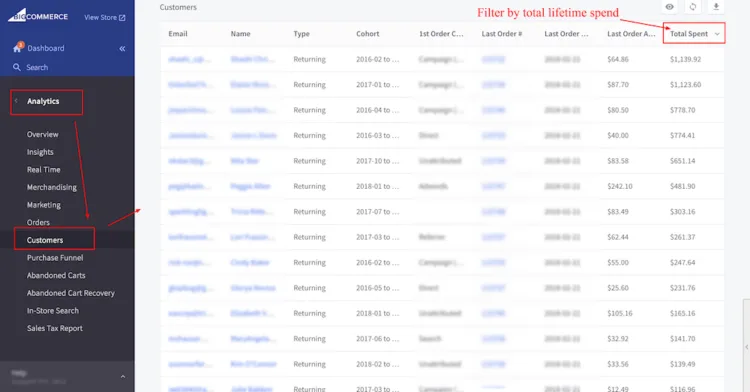
A pre-launch beta is ideal, as it allows you to fix whatever issues pop up in the beta program before you go live.
After going live to all customers, remember to use and analyze the data you collect and make adjustments and improvements when necessary.
Here are your next steps once you launch the program fully.
Remember, redeemers are 2c more likely to be highly satisfied with the Program than non-redeemers, yet still 1/5 of Members have not redeemed, putting them at a higher risk of attrition.
Focus on the redemption experience, not the reward.
Encourage reward goal setting.
Foster better awareness of accumulation status, and communicate progress.
Take action to mitigate post-redemption attrition risk
The Differences Between Loyalty and Referral Programs
The main difference is that a loyalty program rewards the customer for buying products while a referral program rewards them for referring new customers. Both are great strategies that can drive sales and new customers. Here is a great example of a successful product referral strategy from Sumo.
Types of Customer Loyalty Programs
1. Points system.
A points system represents the easiest and simplest kind of loyalty program.
It’s based on the principle of spending more to get more points. Points should be redeemable in the form of rewards, such as:
Discounts.
Freebies.
Special items.
This works especially well for shops that encourage frequent, low-cost purchases.
This also seems to be the most popular program type for online stores.
Pro tip: make it straightforward and not too complicated.
Let’s look at several examples.
See the example below from Grow and Behold. This brand uses Smile.io to manage a straightforward rewards program.
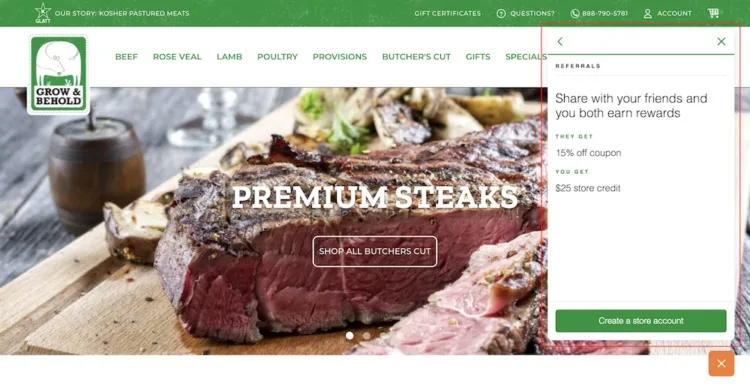
InnerEgo has a point system set up based on order value. This one is also setup using Smile.io.
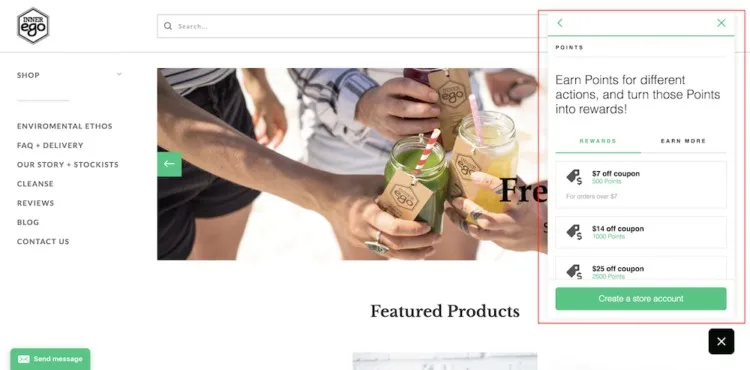
And here’s another example from Sitara Collections using S-Loyalty.

And finally, Sophie & Toffee use SLoyalty as well to run a point-based, tiered system.
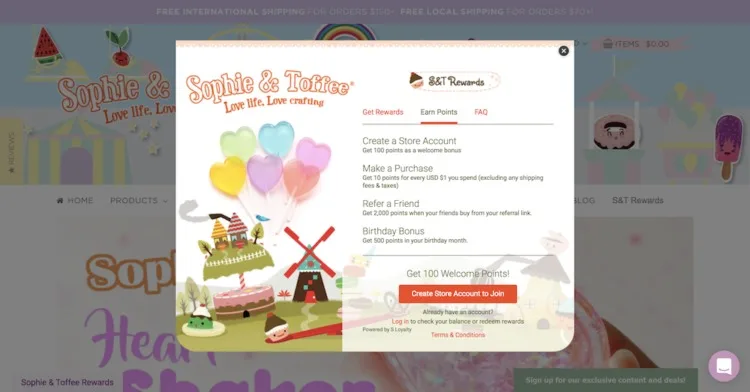
2. Tier system.
A tier system is based on levels of loyalty: the more a customer buys, the higher up the rewards tier they can travel.
This is typically used for businesses with customers who make big-ticket purchases that don’t happen often, such as in the travel industry. Many airlines have adopted this type of program.
The goal is to keep members around for the long term.
Besides traveling while you work, this type of customer loyalty program can be applicable to the ecommerce industry as well. COLLOQUY found that 50% of consumers said they increase their spending or change their purchasing behavior to get a higher tier status in a rewards program of this type.
Pro tip: Start by presenting a small base reward for simply being part of the program and make the next levels easily achievable to reduce program abandonment.
CommunityDiscs.com has something similar setup, using RewardCamp.

3. Partnership program.
According to COLLOQUY, 68% of millennials will remain loyal to a business that offers them the most rewards. Additionally, Collinson Latitude found that 82% of consumers said loyalty programs would be better if they offered more choices.
A partnership program is a great way to target millennials and form partnerships with other businesses.
In Austin, BigCommerce’s HQ hometown, there is a very popular meetup group called Boss Babes. This group partners with brands and local hotels, spas, etc. to offer retreats and other discounted options to their members.
Find something similar in your area to help boost awareness and align yourself with brands and ideas that are on the rise.

4. VIP (paid) program.
Some companies offer a VIP program where customers pay a membership to join. Once you’re a member of that VIP program, you have access to exclusive perks such as discounts, freebies, and priority access to events.
One such example is Amazon Prime, which charges an upfront fee for VIP services like free and expedited shipping.
By doing this, Amazon is able to offset cart abandonment (caused by expensive shipping fees) by making customers feel as though they are getting a much better deal.
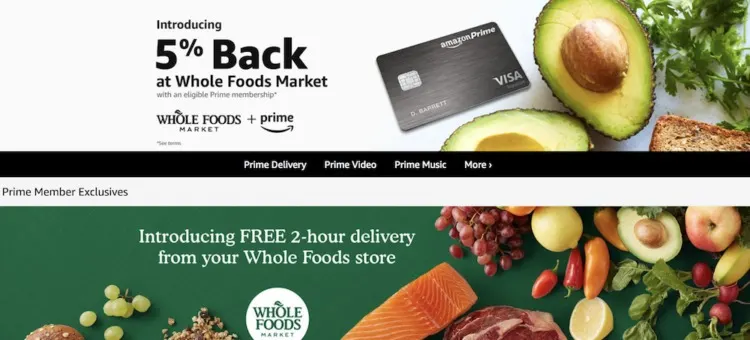
5. Other reward programs.
Other rewards that companies can opt to have include:
Donations to other companies. This is best if it’s aligned with your company culture, such as TOMS, which donates a percentage of profits to its many causes.
Gamification/Contests, such as AppSumo, which constantly runs online sweepstakes that promise to winners gadgets such as Macbook Pros, Fitbits, and software programs such as Photoshop and Dropbox Pro. By doing this, they were able to accrue hundreds of thousands of subscribers to their email list and social sites.
Pro tip: Make sure that the odds of winning the game are no more than 25% and that purchase requirements are attainable so that the members feel that they aren’t being duped.
Make sure everything is legal before taking the contest public.
6. Hybrid programs.
This is a combination of any of the aforementioned loyalty programs.
The trick is to find elements from different programs that mix well together, as is the case with Kiehl’s Rewards, which gives you a guaranteed free birthday gift as well as $10 reward for every $100 purchase.
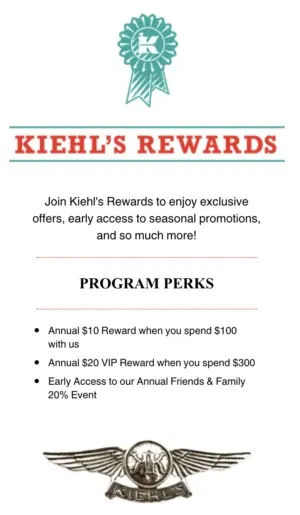
Oxygen4Life has set up a complete hybrid program using Zinrelo. You can see the experience below, where they offer:
Point-based
Tiers through account creation
Birthday bonuses
And more.
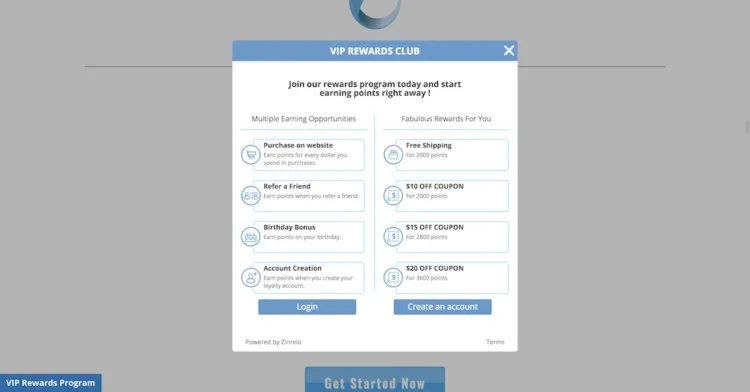
7. No loyalty program.
Some brands, such as Apple, do not have a loyalty program but still have a lot of loyal customers — as evidenced by the many people who fall in line every time a new iPhone or Apple product is released.
Apple is able to get away without a loyalty program because their products are so hard to resist from the get-go.
If you’re a pioneer in your field or are redefining your category, it’s quite possible that you don’t need an ecommerce customer loyalty program.
How to Select a Loyalty App
To have success you need to have the right ecommerce customer loyalty software. To deploy your loyalty programs, many brands offer management via a loyalty app.
Having a mobile app is helpful, especially when customers are out and about without their wallets but still want to patronize your business.
Making it possible to pay with credits in your loyalty app also makes adding transactions to your database easier because everything is done electronically.
Many brands such as Starbucks, Dominos, 7-eleven and top airlines (such as AirAsia) have loyalty apps. Investing in this type of ecommerce customer loyalty program can be quite lucrative, as 75% of all smartphone users are interested in interacting with loyalty schemes via their mobile phones.
The good news? You don’t need to spend too much to create your own customer loyalty app. You can implement your loyalty program using one of the many loyalty apps on the BigCommerce app store.
The most successful loyalty programs make it easy for your customers to earn, redeem and use their rewards. A good app will walk you through all the decisions involved in setting up the loyalty program.
But most importantly, the best ecommerce loyalty software will do the following:
Keep things simple.
Make it easy to redeem rewards.
Make it easy to use the rewards.
Provide monthly performance metrics.
Here are top ecommerce loyalty program software apps to consider using:
Measuring the Effectiveness of Your Customer Loyalty Program
These metrics can help to indicate the effectiveness of your customer loyalty program:
1. Customer retention rate.
Measured over a given time period (a year, a quarter, etc), the customer retention rate measures the number of customers you have retained over a certain time period.
By implementing a successful loyalty program, these numbers should increase. According to a study by Reichheld and Schefter, increasing customer retention rates by 5% increases profits by 25% to 95%.
2. Net Promoter Score (NPS).
As mentioned previously, the Net Promoter Score is a tool that can be used to estimate customer experience, which is related to a firm’s revenue growth.
It is a score on a scale of 1-10 that demonstrates how much a person would recommend your business to others. It is measured by subtracting the number of customers that wouldn’t recommend your business from the number of customers that would.
3. Negative churn.
Customer churn refers to the number of customers that cease their relationship with the company, determined by a certain time period when a customer fails to interact with the business.
Negative churn is the opposite: measuring those that have purchased more or upgraded.
Final Thoughts
With many available options in the market, it can be hard to retain hard-won customers.
With the right strategy and structure, an ecommerce customer loyalty program can level the playing field — even helping to push things in your company’s favor!
Ecommerce businesses:
Have you set up an ecommerce customer loyalty program?
How have you found success?
Tweet @BigCommerce and we’ll share the best insights with our community!

Raheem is the founder of RewardCamp, a loyalty solutions company for online retailers based out of New York City. He has a BA in computer science from Southwestern University, Texas. His latest writings on ecommerce loyalty can be found on the RewardCamp blog.


